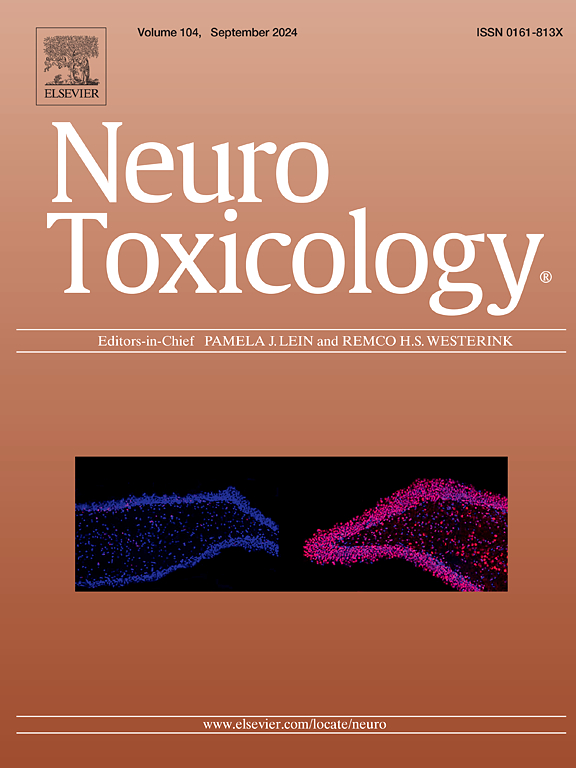除草剂Linuron及其代谢物3,4-二氯苯胺对细胞毒性和氧化还原调节的研究。
IF 3.9
3区 医学
Q2 NEUROSCIENCES
引用次数: 0
摘要
Linuron(3-(3,4-二氯苯基)-1-甲氧基-1-甲基脲)是一种苯脲类除草剂,用于控制禾草和杂草的生长,从而促进大豆等作物的生长。linuron及其代谢物3,4-二氯苯胺(DCA)已被确定具有毒性作用,包括生殖和发育毒性。然而,潜在的神经毒性作用尚未得到彻底的研究。本研究探讨了利努龙和DCA在神经元培养中的毒性作用。采用细胞活力法评估细胞毒性,采用铁和花生四烯酸诱导的C11-BODIPY氧化和ABTS法评估被试化合物的潜在氧化还原调节活性。结果表明,linuron和DCA在较高浓度下对N27细胞(大鼠多巴胺能神经元)具有毒性,特别是在50μM以上。相反,这些化合物对HT-22细胞(小鼠海马神经元)不产生毒性。我们还研究了利努龙和DCA是否影响铁下垂,这是一种由脂质过氧化引起的调节细胞死亡。我们的研究结果表明,由于其固有的自由基捕获抗氧化剂(RTA)活性,DCA显著干扰铁下垂过程并抑制它。综上所述,利努龙及其代谢物DCA对N27细胞均表现出适度的细胞毒性,尚需进一步实验确定其是否具有神经毒性。本文章由计算机程序翻译,如有差异,请以英文原文为准。
Insights into cytotoxicity and redox modulation by the herbicide linuron and its metabolite, 3,4-dichloroaniline
Linuron (3-(3,4-dichlorophenyl)-1-methoxy-1-methylurea) is a phenylurea herbicide used to control the growth of grasses and weeds, thereby promoting the growth of crops such as soybeans. Both linuron and its metabolite, 3,4-dichloroaniline (DCA), have been identified as having toxic effects, including reproductive and developmental toxicity. However, the potential neurotoxic effects have not been thoroughly examined. This study investigates the toxic effects of linuron and DCA in neuronal cultures. A cell viability assay was used to evaluate cytotoxicity, while an iron and arachidonic acid-induced C11-BODIPY oxidation and ABTS assay were conducted to assess the potential redox modulatory activity of the tested compounds. Our results indicated that linuron and DCA were toxic to N27 cells (rat dopaminergic neurons) at higher concentrations, particularly above 50 μM. In contrast, these compounds did not demonstrate any considerable toxicity in HT-22 cells (mouse hippocampal neurons). We also examined whether linuron and DCA influence ferroptosis, a form of regulated cell death caused by lipid peroxidation. Our findings suggest that DCA significantly interferes with the process of ferroptosis and inhibits it due to its inherent radical-trapping antioxidant (RTA) activity. In conclusion, both linuron and its metabolite DCA showed modest cytotoxicity in N27 cells, and further experiments are needed to determine whether these agents cause neurotoxicity.
求助全文
通过发布文献求助,成功后即可免费获取论文全文。
去求助
来源期刊

Neurotoxicology
医学-毒理学
CiteScore
6.80
自引率
5.90%
发文量
161
审稿时长
70 days
期刊介绍:
NeuroToxicology specializes in publishing the best peer-reviewed original research papers dealing with the effects of toxic substances on the nervous system of humans and experimental animals of all ages. The Journal emphasizes papers dealing with the neurotoxic effects of environmentally significant chemical hazards, manufactured drugs and naturally occurring compounds.
 求助内容:
求助内容: 应助结果提醒方式:
应助结果提醒方式:


